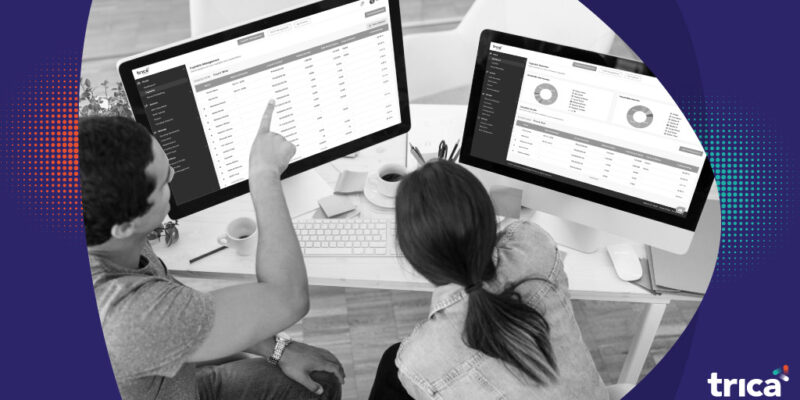
How Can Cap Table Management Help Gain Actionable Business Intelligence?
A capitalization table, abbreviated as a cap table, lists the shareholding structure of a company. It reveals the firm’s market value and other vital details like investor amount and ownership. Also, it includes all aspects of the firm’s ownership, such as common stock, preferred stock, warrants, option pool, convertible debt, etc.
Cap table management is important for early-stage startups because it is strategically important as the companies evolve and scale. When firms go through financing rounds to raise funds, the ownership patterns become more complex. Cap table management serves as a reconciliation of a company’s authorized shares, issued shares, and fully diluted shares.
In this blog post, we will dive deeper into the topic of cap table management and its role in solidifying business intelligence.
What is a cap table used for?
The capitalization table is an important resource for decision-makers, representing a significant amount of the firm’s money. So, cap tables should be consulted whenever a financial choice is made that affects the company’s market capitalization.
Cap table management is useful in the following:
1. Decision-making
Cap tables provide the firm’s present and historical equity holding positions. It is a valuable tool for financial projections and course corrections. Additionally, the shareholding patterns help monitor whether too much power is concentrated in a particular group or individual’s hands, which may influence the company’s direction.
2. Company valuation
Using a waterfall analysis, the cap table also helps evaluate the liquidation priority for scenarios such as acquiring another business, mergers, company sales, etc.
3. Fundraising
Cap table management assists the management team in simulating the results of various fundraising efforts. Startup companies can use cap tables to examine how strategic decisions affect their stock structure.
They can, for example, assess the impact of a pre-money valuation versus a post-money valuation on a potential funding round. Such evaluations help compute debt-equity ratios, manage option pools and convertible notes, track the number of issued shares out of the total authorized shares, etc.
4. Financial analysis
The capitalization table assists owners in analyzing the current equity position and forecasting additional funding round outcomes. A cap table that consistently shows positive growth boosts the confidence of potential investors and key employees, helping to build their trust.
5. Taxation
To prepare the tax returns of the company and its stakeholders, cap table data is necessary. Hence it is important to manage cap tables accurately. As the firm grows and becomes profitable, a minor error in the cap table can result in a difference of tens of thousands of rupees in capital gains.
Leveraging Cap Table Management for Insightful Business Intelligence
Cap tables provide valuable monetary data to a variety of stakeholders, including the founders, existing and potential investors, employees who have exercised their options, regulators and auditors, the company’s legal team, and others.
Let us see how each of these groups uses the information from the cap table for effective decision-making.
- Founders
A startup’s cap table information influences some major managerial and operational decisions. It helps founders make informed choices regarding raising capital, diluting controlling rights, and offering equity compensation. The firm’s founders can use the capitalization table data to raise funds on better terms if they use the right resources and maintain efficient cap table management practices.
- Investors
A cap table can assist investors in determining a company’s risk and potential return. It serves as a document of due diligence for venture capitalists and angel investors.
Data from the cap table demonstrates:
-
- Founders’ level commitment in the startup- Whether the founders still have a significant stake in the company that incentivizes them to perform.
- Scope of future dilution– A large number of unexercised shares and convertible notes at the time of investment means further dilution of the investor’s holdings.
- The firm’s ability to hire and retain talent through equity compensation plans– Is the option pool sufficiently large?
- Controlling stake of other investors- Who are the other investors and how many shares do they own? Having a large number of investors can become an operational hassle if the founder has to spend a lot of time coordinating interests and securing the signatures of all the parties.
All of these factors influence the investor’s decision to fund the firm.
- Employees
Like the other stakeholders, employees with stock options can use a cap table to determine the current value of their shares. Data from cap tables also allows early-stage employees to track the progress of the company’s valuation over time.
- Financial and investment analysts
A cap table is not a legal document. However, it is a reference tool for other financial statements, such as the firm’s balance sheet. The capitalization table displays the specifics of the balance sheet’s shareholders’ equity section.
Additionally, equity transactions such as stock issuances and transfers, option exercises, debt note conversion to equity, and so on must be recorded in the cap table for better decision-making.
Closing notes
Any data is valuable only to the extent that the user applies. The cap table provides a dashboard view of company data to aid in decision-making.
Moreover, your cap table should be a living document that evolves alongside your business. Cap tables should be used as resources and tools to influence business decisions.
With cap table management software, you can bring out the best outcome for your business.
trica’s equity management tool simplifies cap table management for startups and growth-stage companies. Companies can use our scenario modeling calculator to quickly calculate funding outcomes.
Contact us for a free demo today!
ESOP & CAP Table
Management simplified
Get started for free





